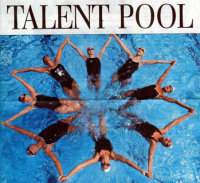(Supply Chain Trends and Issues Article - Continued)
“But if you're an employer who is worried about issues like the finances of the company, you would like HR to think about personnel from the perspective of money and costs, and what happens if you don't have the right people in place to do the necessary jobs,” Cappelli says.
And he thinks he has found the perfect model for managing this process – supply chain management.
 “Managing supply chains is about managing uncertainty and variability. This same uncertainty exists inside companies with regard to talent development” Cappelli adds. “Companies rarely know what they will be building five years out and what skills they will need to make that happen; they also don't know if the people they have in their pipelines are going to be around." “Managing supply chains is about managing uncertainty and variability. This same uncertainty exists inside companies with regard to talent development” Cappelli adds. “Companies rarely know what they will be building five years out and what skills they will need to make that happen; they also don't know if the people they have in their pipelines are going to be around."
In fact, he equates a company’s current talent pool to the way a company thinks about its current supply chain inventory – you need what you need, but having too much is not a benefit but a cost. Cappelli sees the same thing when companies talk about having a “deep bench” of talent.
“In fact, it is worse when we talk about talent. That's because an inventory of talent is much more costly than an inventory of widgets,” Cappelli says. “Talent doesn't sit on the shelf like widgets do. You have to keep paying talent. And the best way to have a piece of talent walk away is to tell it to sit on the shelf and wait for opportunity. Anyone who is ambitious will leave, and then you will lose the big upfront investment you made in that person."
What are some of the keys to a supply chain approach to talent development?
- Be flexible about matching talent to needs: Talent across the enterprise should be considered a more common pool, rather than being locked by division or business unit. A transportation planner in one business unit should be part of a pool that can be accessed by all business units, for example. In another example, IBM’s Global Services business has invested heavily in developing a system that allows it to much more easily and intelligently match its existing consultants and their skill sets to new project and client needs.
- Flexibly mixing insourcing and outsourcing: In a world where it is increasingly hard to predict future needs, and employees often leave after just a few years, companies should use more adaptable models of internal development that include getting employees to share the costs of their development, and then use outside hires to fill in the shortfalls when forecasts of needs inevitably prove wrong.
- Use simulation and scenario analysis: Too many companies pick a hiring scenario and use that to build a static model of future needs. Leading companies are using the same type of techniques that supply chain managers increasingly use for network planning – simulating possible market developments, and looking at different scenarios – making for more informed and often flexible talent recruitment and development plans.
The bottom line: whether it’s for the supply chain organization or the entire company, matching the supply of talent to the demand in a more dynamic, “pull” based manner seems likely to be a source of competitive advantage. Cappelli offers an interesting approach that leverages supply chain principals to addressing a challenge that companies, large and small, will face.
Do you think supply chain principals can be used to think about talent development and availability? How big an advantage will companies that well manage their talent really have? Let us know your thoughts at the Feedback button below. |